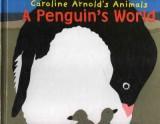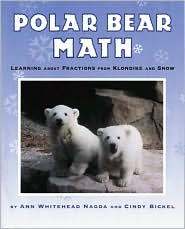The Virtual Bookshelf provides a list of recommended children’s books that reflect the theme of the issue and offers ideas on how to integrate them across the curriculum.
The water, snow, and ice found in the polar regions provide a real-world context for studying physical science concepts, such as states and changes of matter, and earth and space science concepts like the water cycle. The size, appearance, and behavior of glaciers and icebergs engage students and adults alike.
Students should investigate the properties of water, ice, and snow and phase changes through hands-on, inquiry-based experiences, as described in our article “The Water Cycle and the Polar Regions: Hands-On Science and Literacy” in this issue. Reading nonfiction trade books supplements the scientific investigations, connects experiences and concepts, and assists students in visualizing and understanding more abstract concepts, such as evaporation.
As always, most of our selected books are nonfiction. We believe that elementary students need exposure to this genre to set a compelling purpose for reading and to become familiar with the text structures used in expository and informational text. However, we have included two fiction books as well. Water Dance, by Thomas Locker, was selected for its rich and precise word choice and engaging presentation of the water cycle. Lulie the Iceberg, an imaginative and heartwarming story, provides a blend of scientific fact, moral lessons, and beautiful illustrations. Carefully selected fiction can serve as a springboard for a science lesson or as a basis for comparison with nonfiction on a similar topic.
We’ve divided this month’s bookshelf into three sections: States of Matter and the Water Cycle, Glaciers and Icebergs, and Penguins and Polar Bears.
States of Matter and the Water Cycle
Use these books to develop the concepts addressed in this issue’s science and literacy lessons focusing on the water cycle and states and changes of matter.
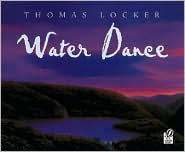 |
Water Dance. Thomas Locker. 1997. Picture book. Recommended ages: Grades K-5.
Although this book is written in poetic language, the author-illustrator’s precise word choices and beautiful paintings will engage students in scientific concepts. The book’s back matter gives facts about each of the 13 water scenes depicted. For ideas on using the book, please refer to “Water Dance: Integrating Science, Literacy, Art, and Movement” in the Across the Curriculum department of this issue. |
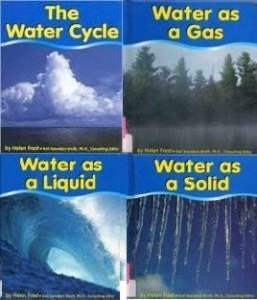 |
Water Series. Helen Frost. 2000. Nonfiction books. Recommended ages: Grades K-1.
Four books in this series use simple text and color photographs to illustrate the water cycle and the behavior and the properties of water in its different states of matter. The book titles are Water As a Gas, Water As a Liquid, Water As a Solid, and The Water Cycle. |
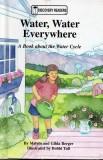 |
Water, Water Everywhere: A Book about the Water Cycle. Melvin and Gilda Berger. 1995. Nonfiction book. Recommended ages: Grades 2-4.
This beginning reader examines the water cycle, phase changes of water, and how people in cities and small towns get clean water. |
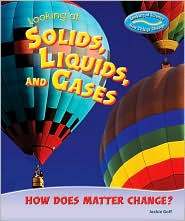 |
Looking at Solids, Liquids, and Gases: How Does Matter Change? Jackie Gaff. 2008. Nonfiction book. Recommended ages: Grades 2-4.
Divided into chapters, this book explains the states of matter and how matter can change from one state to another. Each section is headed with a question, making this book perfect for use with a comprehension strategy such as SQ3R. |
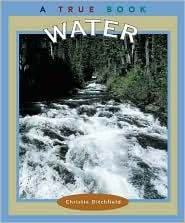 |
Water. Christin Ditchfield. 2002. Nonfiction book. Recommended ages: Grades 2-4.
This book is divided into five chapters, such as “What Is Water?” and “The Water Cycle,” a list of further reading and web sites, and a glossary. Best for independent reading or sharing with small groups. |
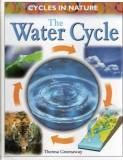 |
The Water Cycle. Therese Greenaway. 2001. Nonfiction book. Recommended ages: Grades 3-5.
In this book, readers can find out about how our planet’s water is recycled and reused through a series of natural phenomena called the water cycle. Other topics include water for life, water purification, and human consumption and pollution of water. Each chapter is devoted to a separate topic and could be the basis of a series of hands-on science lessons. |
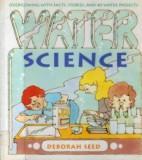 |
Water Science. Deborah Seed. 1992. Nonfiction book. Recommended ages: Grades 2-5.
This book is overflowing with facts, stories, and 40 water projects! Readers will be enticed by the fascinating facts and be amazed by the many explorations. This book could be used by a teacher to create a series of science centers, or as the basis for independent inquiry and exploration. |
Glaciers and Icebergs
Use these books to introduce the concepts of glaciers, ice caps, ice sheets, and icebergs to students. The books complement the hands-on science activities about glaciers and icebergs highlighted in the article “The Water Cycle and the Polar Regions: Hands-On Science and Literacy” in our Science and Literacy department.
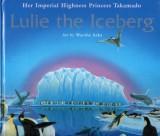 |
Lulie the Iceberg. Takamado no Miya Hisako. 1998. Picture book (Fiction) and Audio. Recommended ages: Grades K-5.
This tale of Lulie, an iceberg that journeys from the Arctic to the Antarctic, was written by Princess Hisako Takamado of Japan, assisted by Icebridge, a forum of scientists and educators dedicated to promoting knowledge about the polar regions and the oceans. While the story ascribes human attributes to ice, wind, and animals, it also blends accurate scientific information about ocean currents and the species and conditions found at various latitudes. Illustrations are by Warabe Aska. There is also an audio version with an original score composed by Jeffrey Stock and performed by Yo-Yo Ma in the tradition of Peter and the Wolf. Lulie the Iceberg is a story that will easily provide a cross-curricular connection to geography, music, and the language arts. |
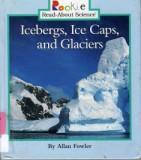 |
Icebergs, Ice Caps, and Glaciers. Allan Fowler. 1997. Nonfiction book. Recommended ages: Grades K-2.
Extremely simple text and bright color photographs make this book appealing to young learners. The author combines facts about icebergs, ice caps and glaciers into a concise introductory book. A glossary with pictures helps students master new vocabulary. |
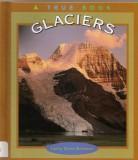 |
Glaciers. Larry Brimner. 2000. Nonfiction book. Recommended ages: Grades 2-4.
This basic book describes what glaciers are, how they are formed, and how they move and shape the earth. Best for independent reading or sharing with small groups. |
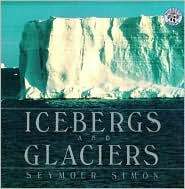 |
Icebergs and Glaciers. Seymour Simon. 1999. Nonfiction book. Recommended ages: Grades 3-5.
Breathtaking photographs mark this introduction to a frozen world of mountaintops and polar regions. |
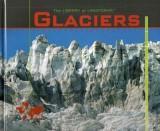 |
Glaciers (The Library of Landforms Series). Isaac Nadeau. 2006. Nonfiction book. Recommended ages: Grades 3-5.
In this book readers can learn about the types of glaciers found throughout the world, their formation, and how they shape the land, as well as life on or near glaciers. Each two-page spread covers a single topic. The headers and straightforward text make this a great book for practicing comprehension strategies, such as SQ3R. The series publisher, PowerKids Press, has developed an online list of web sites related to the content of this book. The site is updated regularly and provides a great extension to information in the book. |
Penguins and Polar Bears
This article was written by Angela Grandstaff and Jessica Fries-Gaither. For more information, see the Contributors page. Email Kimberly Lightle, Principal Investigator, with any questions about the content of this site.
Copyright August 2008 – The Ohio State University. This material is based upon work supported by the National Science Foundation under Grant No. 0733024. Any opinions, findings, and conclusions or recommendations expressed in this material are those of the author(s) and do not necessarily reflect the views of the National Science Foundation. This work is licensed under an Attribution-ShareAlike 3.0 Unported Creative Commons license.

